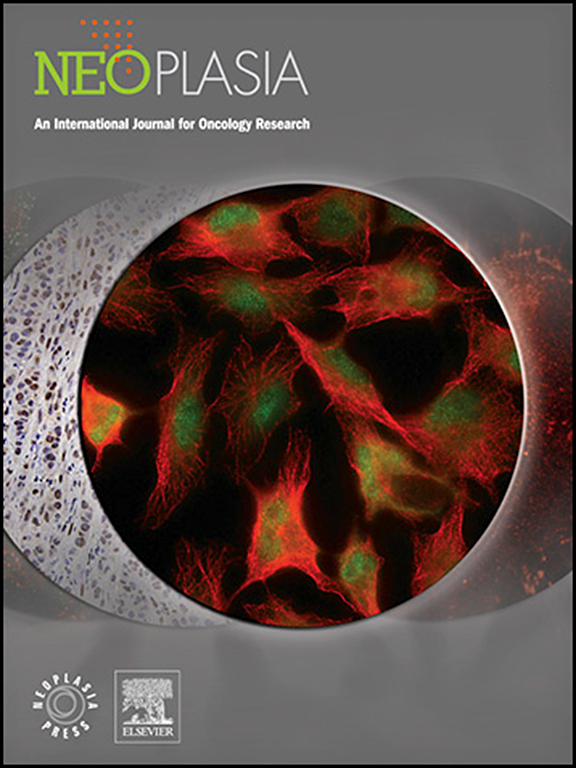Clinical and genetic drivers of oligo-metastatic disease in colon cancer
IF 4.8
2区 医学
Q1 Biochemistry, Genetics and Molecular Biology
引用次数: 0
Abstract
Background
Oligo-metastatic disease (OMD) in colon cancer patients exhibits distinct clinical behavior compared to poly-metastatic disease (PMD), with a more responsive and indolent course. This study aims to identify clinical and biological factors uniquely associated with oligo-metastatic behavior.
Methods
Metastatic colon cancer patients from an academic center underwent genetic characterization. OMD was defined as ≤3 lesions per organ, each with a total diameter <70 mm and none exceeding 25 mm. Tumor DNA sequencing by NGS utilized the TruSight Oncology 500 kit. Overall survival (OS) was determined from metastasis diagnosis until death using Kaplan–Meier analysis. Multivariate Cox regression examined prognostic links between clinicopathological and genetic factors. Associations with metastatic patterns were evaluated using Chi-square.
Results
The analysis involved 104 patients (44 with OMD, 60 with PMD). OMD was more prevalent in males (P = 0.0299) and with single organ involvement (P = 0.0226). Multivariate analysis adjusted for age (>70 vs. <70 years), gender (male vs. female), tumor side (right vs. left), metastatic involvement (more than one site vs. one site), response to first-line therapy (disease control vs. no disease control), and RAS/BRAF variants (wild-type vs. mutated) identified OMD vs. PMD as the strongest independent predictor of survival (HR: 0.14; 95 % CI: 0.06-0.33; P<0.0001). OMD patients exhibited distinct molecular characteristics, including lower frequencies of BRAF p.V600E (P=0.0315) and KRAS mutations (P=0.0456), as well as a higher frequency of high tumor mutational burden (P=0.0127). Additionally, by integrating data from public datasets and our case study, we hypothesize that some gene alterations (i.e.: BRAF, SMAD4, RAF1, and mTOR) may prevent OMD occurrence.
Conclusion
OMD, characterized by male predominance, single-site involvement, and distinct molecular features in colon cancer, suggests the need for tailored management strategies.
结肠癌少转移性疾病的临床和遗传驱动因素。
背景:与多转移性疾病(PMD)相比,结肠癌患者的低转移性疾病(OMD)表现出不同的临床行为,具有更敏感和惰性的过程。本研究旨在确定与低转移性行为相关的临床和生物学因素。方法:对来自某学术中心的转移性结肠癌患者进行基因鉴定。OMD定义为每个器官≤3个病变,每个病变有总直径。结果:分析涉及104例患者(44例OMD, 60例PMD)。男性多见(P = 0.0299),单器官多见(P = 0.0226)。结论:OMD在结肠癌中以男性为主、单部位受损伤和独特的分子特征为特征,表明需要量身定制的治疗策略。
本文章由计算机程序翻译,如有差异,请以英文原文为准。
求助全文
约1分钟内获得全文
求助全文
来源期刊

Neoplasia
医学-肿瘤学
CiteScore
9.20
自引率
2.10%
发文量
82
审稿时长
26 days
期刊介绍:
Neoplasia publishes the results of novel investigations in all areas of oncology research. The title Neoplasia was chosen to convey the journal’s breadth, which encompasses the traditional disciplines of cancer research as well as emerging fields and interdisciplinary investigations. Neoplasia is interested in studies describing new molecular and genetic findings relating to the neoplastic phenotype and in laboratory and clinical studies demonstrating creative applications of advances in the basic sciences to risk assessment, prognostic indications, detection, diagnosis, and treatment. In addition to regular Research Reports, Neoplasia also publishes Reviews and Meeting Reports. Neoplasia is committed to ensuring a thorough, fair, and rapid review and publication schedule to further its mission of serving both the scientific and clinical communities by disseminating important data and ideas in cancer research.
 求助内容:
求助内容: 应助结果提醒方式:
应助结果提醒方式:


